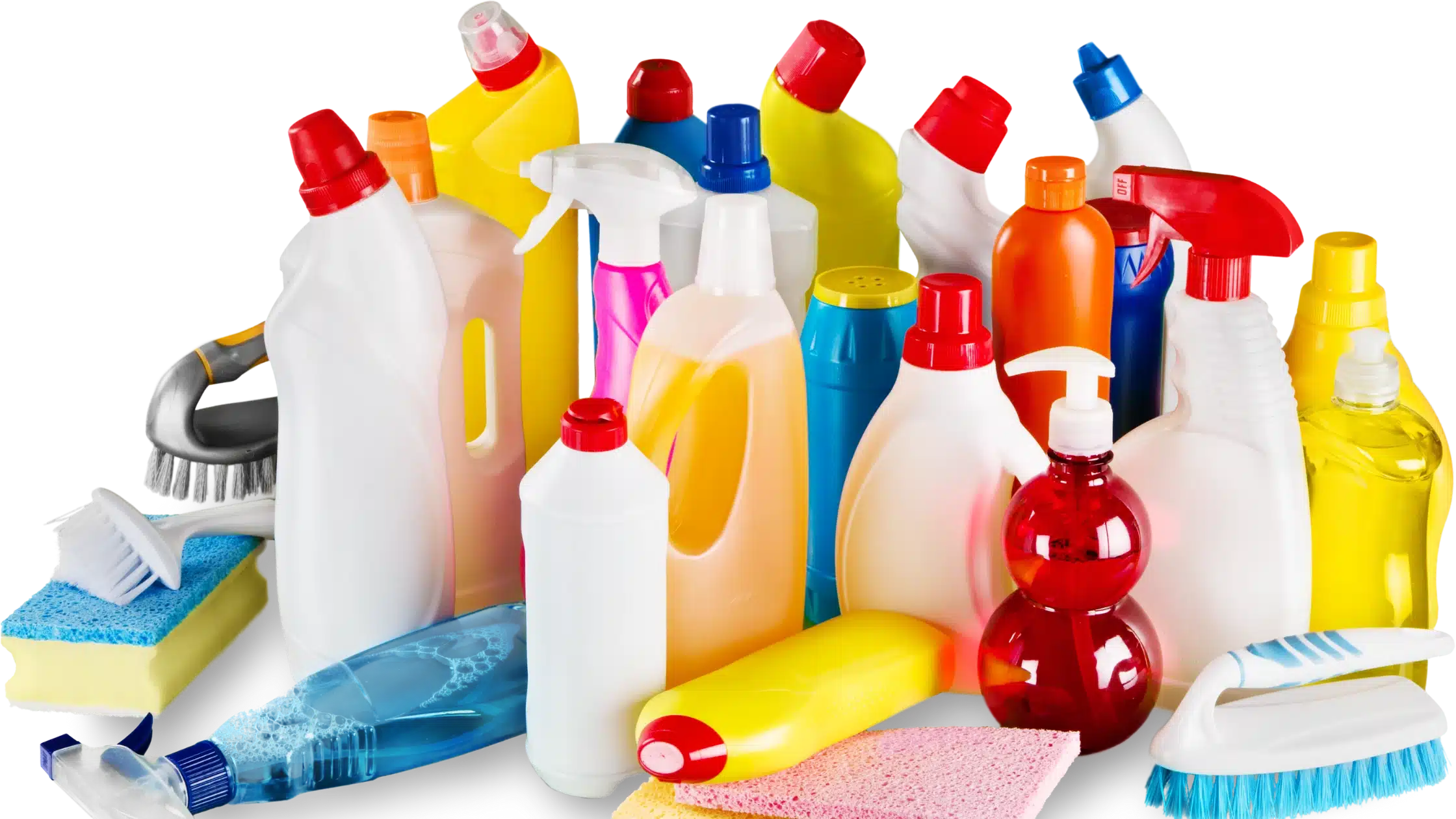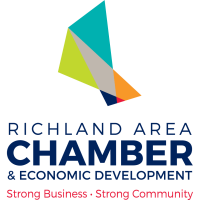Eco-friendly cleaning solutions for commercial spaces are making waves in today’s market, with benefits like sustainability, improved indoor air quality, and reduced environmental impact in the office environment. Businesses are taking steps toward sustainability, with a variety of methods popping up to keep offices sparkling without harming the planet. Gone are the days of harsh chemicals; now, glass and surfaces can look pristine using green practices that step lightly on our environment.
The term ‘eco-friendly’ isn’t just a buzzword—it’s a commitment to healthier workspaces and a cleaner Earth. From bustling markets to quiet office corners, these cleaning practices use simple ingredients but pack a powerful punch against dirt and grime. As we shift focus from traditional products, eco-friendly options rise as the heroes of hygiene in every nook of commercial domains.
Key Takeaways
Adopting eco-friendly cleaning solutions enhances the sustainability of commercial spaces and contributes to a healthier environment for employees and visitors.
Transitioning to green cleaning practices not only supports the planet but also can improve the indoor air quality, reducing potential health risks associated with traditional cleaning chemicals.
To effectively implement green cleaning, choose products with recognized environmental certifications and invest in equipment designed for reduced water and energy use.
Developing a comprehensive green policy and training staff on eco-friendly techniques ensures consistency and commitment to green practices across your commercial space.
Measuring the effectiveness of your green cleaning program through feedback and environmental impact assessments helps fine-tune practices and demonstrate the value to stakeholders.
Going beyond cleanliness, eco-friendly cleaning also involves educating employees and patrons about sustainability, fostering a culture of environmental responsibility.
Understanding Green Cleaning
Defining Eco-Friendly
Eco-friendly cleaning practices mean using products and methods that are safe for the environment. These products don’t harm the earth or our health. They meet special standards, showing they keep nature in mind.
To be truly eco-friendly, a product must pass tests. It should not have bad chemicals that could hurt water, air, or soil and should employ friendly cleaning products, methods, and practices. Some groups check if these products are really green or just pretending—this is called greenwashing.
Greenwashing is when companies say their stuff is eco-friendly but it’s not true, often due to misleading practices. They do this to look good without actually helping the planet.
Benefits of Green Solutions
Using green solutions helps our planet a lot. They make less pollution through friendly office cleaning practices, which we call lowering our carbon footprint. This means cleaner air and less climate change trouble.
These kinds of cleanings also make work places safer and healthier for everyone there. There are fewer chances to get sick from harsh chemicals found in regular cleaners with friendly office cleaning practices.
Choosing green shows people your company cares about health, Earth’s future, and employs friendly office cleaning practices. This can make customers like you more because they see you share their values on taking care of where we all live.
Green vs Traditional Products
Green products use different stuff inside them than traditional ones do—they’re made with natural ingredients instead of harmful chemicals.
When we compare how these two types affect nature, green ones win because they don’t pollute as much as traditional cleaners can.
But some folks worry if green products work as well as regular ones—the truth is many do! In fact, sometimes they can clean even better while still being kind to Mother Nature.
Advantages of Eco-Friendly Cleaning
Health Benefits
Eco-friendly cleaning solutions offer significant health benefits. By reducing exposure to harsh chemicals, these products help minimize health risks for both staff and clients in commercial spaces. Harsh chemicals can cause skin irritation, breathing problems, and other health issues. Natural solutions are gentler on the body.
For example, a cleaner that uses plant-based ingredients rather than ammonia will be safer for a person with asthma. These natural options support overall wellness within the workplace environment. They create a space that feels fresh without the use of strong synthetic fragrances or harmful compounds.
Environmental Impact
The environmental impact of toxic cleaners is far-reaching. Chemicals from traditional cleaning agents can harm wildlife and enter waterways, causing long-term damage to ecosystems. In contrast, eco-friendly products often have biodegradable ingredients which break down naturally without harming nature.
By choosing green cleaning methods, businesses also contribute to the reduction of ozone-depleting substances released into the atmosphere. This action helps protect our planet’s crucial ozone layer which guards us against harmful UV radiation from the sun.
Cost-Effectiveness
Turning to eco-friendly solutions isn’t just good for health and the environment; it’s also cost-effective in many ways:
Sustainable choices lead to long-term savings as they tend to require less product per clean.
Using concentrated formulas or refillable containers reduces waste management expenses.
Some governments provide incentives for green businesses which could mean tax reductions or credits.
For instance, using microfiber cloths instead of paper towels not only cleans more effectively but also cuts down on waste production and costs over time because these cloths are reusable after washing.
Implementing Green Practices
Sustainable Techniques
Eco-friendly cleaning is more than just using safe products. It’s about sustainable techniques. This means changing how we clean to save resources. For example, using less water or reusing cloths instead of disposable wipes.
Businesses can make a big difference by:
Cutting down on water use.
Choosing reusable items.
Saying no to single-use plastics.
These steps help the planet and often save money too!
Cleaning with conservation in mind is smart. We must think about the future when picking our methods.

Choosing the Right Products
Identifying Green Products
When picking cleaning supplies, look for EcoLogo or Green Seal marks. These show that products are eco-friendly. They have passed tests to prove they’re safe for the planet and us. To be sure, always check what’s in them.
Reading labels is key. You want stuff that won’t harm nature or your health. Avoid cleaners with VOCs — these chemicals can pollute the air and make you sick.
Natural Ingredients
Plant-based cleaners are better than man-made ones. They’re kinder to Earth and often work just as well if not better! Plus, they smell nice naturally because of things like lemon or pine.
Essential oils aren’t just for smelling good; they also kill germs! And did you know? Baking soda and vinegar can clean lots of stuff in offices without hurting anyone or anything.
Microfiber Usage
Microfiber cloths catch more dirt than regular rags do. This means you don’t need as much cleaner, which saves money and helps the planet too!
These cloths last a long time because you can wash them over again instead of throwing them away after one use like paper towels.
Green Cleaning Equipment
Sustainable Tools
Eco-friendly cleaning isn’t just about the products used. It’s also about the tools and equipment. For commercial spaces, it is smart to invest in tools that last a long time. These should be easy to fix if they break.
Some companies make tools from materials that are better for Earth, like recycled stuff or bamboo. These choices help reduce waste.
Modern eco-designed gadgets can clean more area with less effort. This means workers can do their jobs faster and use less energy overall.
Choose durable cleaning tools.
Look for items made of sustainable materials.
Pick modern equipment designed to work efficiently.
Reducing Water Usage
Water is precious, so saving it is key in green cleaning methods. One way businesses do this is by installing fixtures that limit how much water flows out of them.
There are special ways to clean that don’t need lots of water too. Being careful not to waste water when mopping floors or washing windows makes a big difference over time.
Some places collect rainwater and use it instead of tap water for things like watering plants or even flushing toilets!
Use low-flow faucets and toilets.
Learn cleaning techniques that save water.
Consider setting up systems to catch and reuse rainwater.
Energy-Efficient Machines
Choosing the right machines can lower how much electricity you use. Appliances with an ENERGY STAR label are known for being power-savers which helps keep electric bills down in large buildings.
Machines with settings you can change let cleaners adjust how strong they run based on what they need at the moment—no wasting energy on full blast all the time!
Keeping these machines working well through regular check-ups also stops them from using extra power because something’s wrong inside them.
Creating a Green Policy
Policy Framework
When businesses decide to use eco-friendly cleaning solutions, they need rules. These rules are part of a policy framework. First, companies should write clear guidelines on how to clean in ways that don’t hurt the environment. This means using less water and safer chemicals.
Next, it’s important to set goals that can be measured. For example, a goal could be to cut down waste by half in one year. Companies also have to follow laws about keeping air and water clean.
Develop clear sustainability guidelines
Set measurable environmental goals
Ensure legal compliance
These steps make sure everyone knows what the company wants to achieve with green cleaning.
Employee Participation
It’s not just bosses who make things happen; employees do too! To get staff excited about green initiatives, companies might give rewards or recognition for good ideas or extra effort in being eco-friendly.
Creating a place where every person feels their actions matter is key. It makes people want to help more with sustainability efforts.
Companies can also teach their teams special skills for cleaning without harming nature. Training programs show them new ways of doing things that are better for our planet.
Offer rewards for green practices
Value individual contributions
Provide eco-friendly training programs
When workers learn and care about these issues, they help turn plans into real action!
Monitoring Progress
To see if things are getting better, businesses must keep track of changes over time. They often set benchmarks—these are like checkpoints—to look at how well they’re doing compared with before.
They use numbers and facts from data-driven approaches so they know exactly what’s working and what’s not.
If something isn’t going as planned, it’s okay! The strategy can change based on what the numbers say.
Adjusting methods helps reach those initial environmental targets faster or even set new ones!
Measuring Effectiveness
Environmental Audits
Businesses must check how well they’re doing. They can do this by having audits. An audit looks at the cleaning ways used to see if they are good for Earth. It helps find parts that need to get better.
When a business does an audit, it writes down what it finds out. This report is shared with people who care about the business, like workers and customers. By sharing, everyone knows how the company is helping our planet.
Health and Well-being
Clean places make people work better. When spaces are cleaned with safe stuff, there’s less chance of getting sick from bad chemicals.
Keeping workspaces free of toxins also helps minds stay healthy. People feel better when they know their health is not at risk from cleaning materials.
Reviewing Practices
It’s important to always look at how we clean and try to do it better. This means checking on new green ways to clean and saying goodbye to old ones that hurt our world.
As time goes on, businesses should keep learning about new tools and products that help protect nature while keeping spaces clean.

Transitioning to Green Services
Switching Providers
When businesses decide to go green, they look at their cleaning supplies. It’s important to choose suppliers who care about the planet. Companies should check if a supplier has a good record for helping the environment. They need to pick those that offer eco-friendly products.
Suppliers are more than just stores. They are partners in keeping our world clean. When choosing them, companies think about how products are made and what happens after we use them up. This means looking at everything from start to finish.
Contract Considerations
Businesses also change their service deals to help nature. They add special parts in agreements that make sure cleaning services follow green rules. These parts match with what the company wants for Earth’s health.
Making deals with these rules is not always easy but it helps our planet later on. Businesses talk with cleaning services so both sides agree on using safe stuff for cleaning and caring for nature over time.
DIY vs Professional Services
Some companies think if they should clean by themselves or hire experts for eco-friendly cleaning solutions for commercial spaces . Both choices have good points and bad points:
Doing it yourself means you control what cleaners you use.
But, professional services have people trained in using green methods correctly.
Here’s a quick list of things businesses consider:
Do we know enough about green cleaning?
Can we afford the right tools and products?
Will this choice help us reach our goals?
Beyond Cleanliness
Pest Control Maintenance
Pests can be a big problem in commercial spaces. But there are eco-friendly ways to keep them away. Instead of using harsh chemicals, you can use safe methods that don’t harm the environment.
One way is to stop pests from coming in the first place. This means keeping your space clean and not leaving food out. You can also use traps that catch pests without hurting them. And, there are natural things like certain plants that keep pests away because they don’t like the smell.
It’s important to choose these kinder options for pest control. They help protect our planet and everything living on it.
Conclusion
Eco-friendly cleaning isn’t just a trend; it’s your ticket to a healthier, more sustainable future for your commercial space. By understanding green cleaning and choosing the right products, you’re not just sprucing up the place; you’re taking a stand for the planet. Advantages? Loads. From safer environments to cost savings, the benefits of eco-friendly cleaning shine bright. Implementing green practices shows you care about your impact and are ready to lead by example.
Ready to roll up your sleeves? Great! Start by creating a green policy, measure its effectiveness, and keep pushing the boundaries beyond mere cleanliness. Your move towards green services is a powerful statement in itself. So why wait? Dive in, make that switch, and let’s get your space sparkling the eco-way. Your customers will notice, and so will Mother Earth. Let’s clean up our act, together!
Frequently Asked Questions
What is green cleaning for commercial spaces?
Green cleaning involves using environmentally friendly products and methods to maintain cleanliness in commercial areas, reducing harm to people and the planet.
Why should businesses consider eco-friendly cleaning?
Eco-friendly cleaning reduces chemical exposure, supports sustainability, and can enhance a business's reputation as an environmentally responsible entity.
How do I start implementing green practices in my workspace?
Begin by choosing certified eco-friendly products, training staff on sustainable methods, and establishing a clear green policy for your company’s cleaning routine.
What are some advantages of using green cleaning solutions?
Advantages include improved indoor air quality, safer environments for staff and customers, and reduced environmental impact from harmful chemicals.
Can switching to eco-friendly products help reduce costs?
Yes! Many green products are cost-effective due to concentrated formulas that last longer and multi-purpose uses that reduce the need for multiple cleaners.
How can I measure the effectiveness of my green cleaning program?
Monitor key indicators like waste reduction metrics, supply usage rates, employee health data, customer feedback on cleanliness standards.




